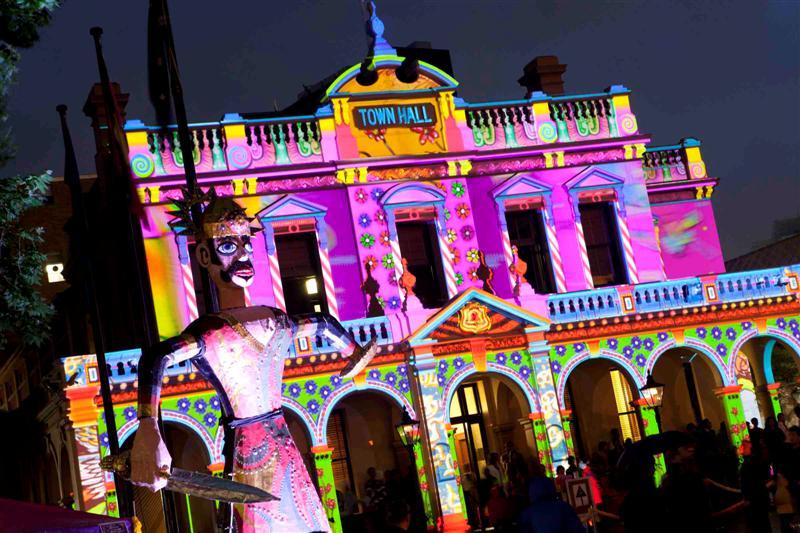This article criticises the management of Parramasala. Artistic director Philip Rolfe’s response is now on ArtsHub.
The South Asian Arts Festival, aptly named Parramasala, kicks off today. South Asian Australians should have reason to feel pleased but many of us are actually disappointed with ‘our’ arts festival.
From 8 to 11 November you’ll be treated to a “feast of South Asian arts” from the enigmatic singer Susheela Raman to the multi talented Ansuya Nathan who stars in her one-woman show Long Live the King. Ansuya happens to be an Indian- Australian and a NIDA graduate. Failing to find any stage or screen work in Australia, she left Sydney to pursue her career in LA. This is an often-heard story reflecting the ongoing lack of opportunity in Australia for many non-Anglo actors and artists. Their choices are to fund and create their own works, build new audiences abroad or stay here and risk a lifetime of playing racial clichés, or worse, remain unemployed.
This culture of exclusion is much more pervasive. I remember three years ago when Parramasala was first conceived, my friends, colleagues and I were ecstatic. Here was an acknowledgement of the diversity of Sydney, the burgeoning Indian and South Asian community, and the possibilities for art-making and dialogue. We saw an opportunity to contribute artistically to the cultural landscape of our home.
Our excitement quickly deflated when we saw the festival staff list; an overwhelmingly non-South Asian collective, with no senior South Asian staff. To his credit, the Festival Director met with a number of South Asian artists and arts workers, including myself. We provided copious amount of advice and introduced local contacts. We shared everything from the importance of incorporating the minor South Asian communities in the festival, such as the Sinhalese, to the importance of free and engaging public events. All advice was taken and some of it was implemented. Then it hit me – If they are coming to us for advice, then why don’t we hold these positions ourselves? Why are we not steering the festival? Why are we always the community consultants instead of the cultural programmers?
This year as Parramasala reaches its third year, there comes more troubling news, the festival has failed to engage and win new audiences and the program has shrunk to its smallest in three years. So why are we South Asians and Sydney-siders ignoring Parramasala? Take for example this year’s event Tasting India with Christine Manfield, Parramasala has decided to forgo all the great South Asian chefs that live and work in Australia and contract an Anglo-Australian to share the recipes that have been “entrusted to her care” by Indian mothers and aunties. This is an all-new low in cultural misappropriation. When did an Australian of non-South Asian background become the middle woman to these recipes? Wouldn’t you rather see and hear directly from these mothers and aunts? There are plenty of them right here in Sydney – I know I would.
The recently released Asian Century White Paper by the Federal Government goes a long way to encourage cultural and artistic participation between Asia and Australia, we are after all Asian geographically. As with any White Paper, it is merely the first step to developing meaningful policy. At this point it is important that we explore the intricate details that are forgone in the document. Firstly, there is no “us and them”, If we are to engage the Asian communities abroad, we should begin by acknowledging and engaging the Asian-Australian community. We should develop policies that are beyond importing Asian art, instead focusing on Asian-Australian artists and arts workers, who can connect with their Australian cultural landscape and their foreign ancestry. They have the capacity to create works that are uniquely identifiable in the world of art. Here lies our competitive advantage in the region; we have the opportunity to present works that explore the greatest phenomena of our times; The Diaspora.
As Asia Link CEO Lesley Alway says, diverse art is more than representation; it’s a paradigm shift. Take for example Australian film and TV, state funded networks such as the ABC commission very little diverse content, have no strategies to recruit culturally diverse staff and have no board members of culturally diverse backgrounds. This multilevel disparity serves to reinforce the old insular imagining of Australia as a white nation. The Australia Council for the Arts, which commissions some of the most complex and beautiful diverse content, is sadly just as barren in reference to diversity in the boardroom. Most perplexingly, The Asian Century White Paper itself had no Asian-Australians on the advisory committe.
At this year’s festival, Parramasala be announcing their new Director who will be responsible for steering the festival over the next three years. In light of the above concerns, one can only hope the appointed director is South Asian, or has some real investment in the South Asian arts and communities. Otherwise we have ahead of us another three years of misadventures in multicultural programming and continuing vision of Asia as an external and exotic place than an intricate fabric of Australia.





